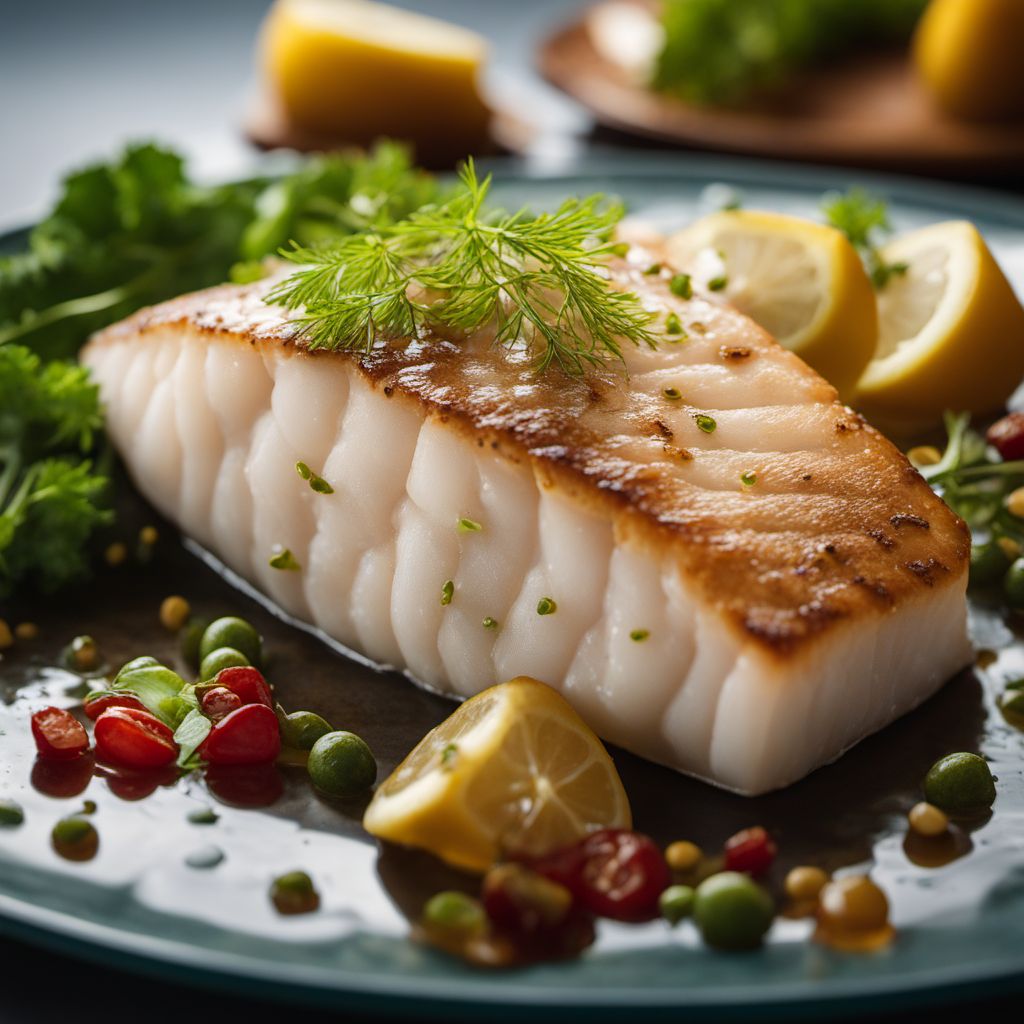
Ingredient
Halibut, atlantic
The King of Flatfish: Discovering the Delicacy of Atlantic Halibut
Atlantic halibut has a mild and slightly sweet flavor with a firm and meaty texture. Its flesh is white and lean, making it an excellent choice for grilling, baking, or pan-searing. The appearance of Atlantic halibut is characterized by its large size, flat shape, and both eyes on one side of the body.
Origins and history
Atlantic halibut is native to the North Atlantic Ocean and has a long history of being a valuable food source in coastal communities. It has been commercially fished for centuries and is considered a delicacy in many cuisines. However, due to overfishing, Atlantic halibut populations have declined, and sustainable fishing practices are now in place to protect this species.
Nutritional information
Atlantic halibut is a good source of high-quality protein and essential omega-3 fatty acids, which are beneficial for heart health. It also contains vitamins such as vitamin D and minerals like selenium and magnesium. With around 140-160 calories per 100 grams, Atlantic halibut is a nutritious seafood choice.
Allergens
Fish, N/A
How to select
When selecting Atlantic halibut, look for fillets or steaks that are firm, moist, and have a fresh sea smell. The flesh should be translucent and free from any discoloration or browning. If buying a whole fish, check for clear and bright eyes, intact scales, and red gills as indicators of freshness. Opt for sustainably sourced Atlantic halibut to support responsible fishing practices.
Storage recommendations
To maintain the freshness and quality of Atlantic halibut, store it in the refrigerator at a temperature of 32-39°F (0-4°C). Keep the fish wrapped in moisture-proof paper or plastic wrap to prevent drying. Consume it within 1-2 days of purchase for the best flavor and texture.
How to produce
Atlantic halibut is primarily caught through commercial fishing methods. However, for those interested in aquaculture, it is possible to raise Atlantic halibut in large tanks or sea pens with proper equipment and knowledge. This process requires careful monitoring of water quality, feeding, and growth conditions.
Preparation tips
Atlantic halibut can be prepared in various ways, such as grilling, baking, broiling, or pan-searing. It pairs well with citrus flavors, herbs like dill or parsley, and sauces like lemon butter or caper sauce. The firm texture of Atlantic halibut also makes it suitable for use in fish tacos, fish stews, or fish cakes.
Substitutions
Cod, haddock, or sole can be used as substitutes for Atlantic halibut, as they share similar characteristics and flavors. However, each fish may have slight differences in texture and taste.
Culinary uses
Atlantic halibut is highly valued in the culinary world and is used in a wide range of dishes. It can be grilled, baked, or pan-seared and served as a main course. It is also commonly used in fish stews, chowders, and fish tacos. Atlantic halibut is a popular choice for fine dining establishments and seafood-focused restaurants.
Availability
Atlantic halibut is commonly found in the North Atlantic Ocean, particularly in regions such as Canada, the United States (New England), Iceland, Norway, and the United Kingdom.
